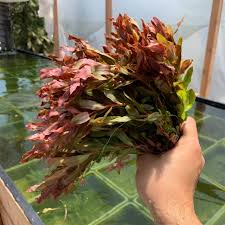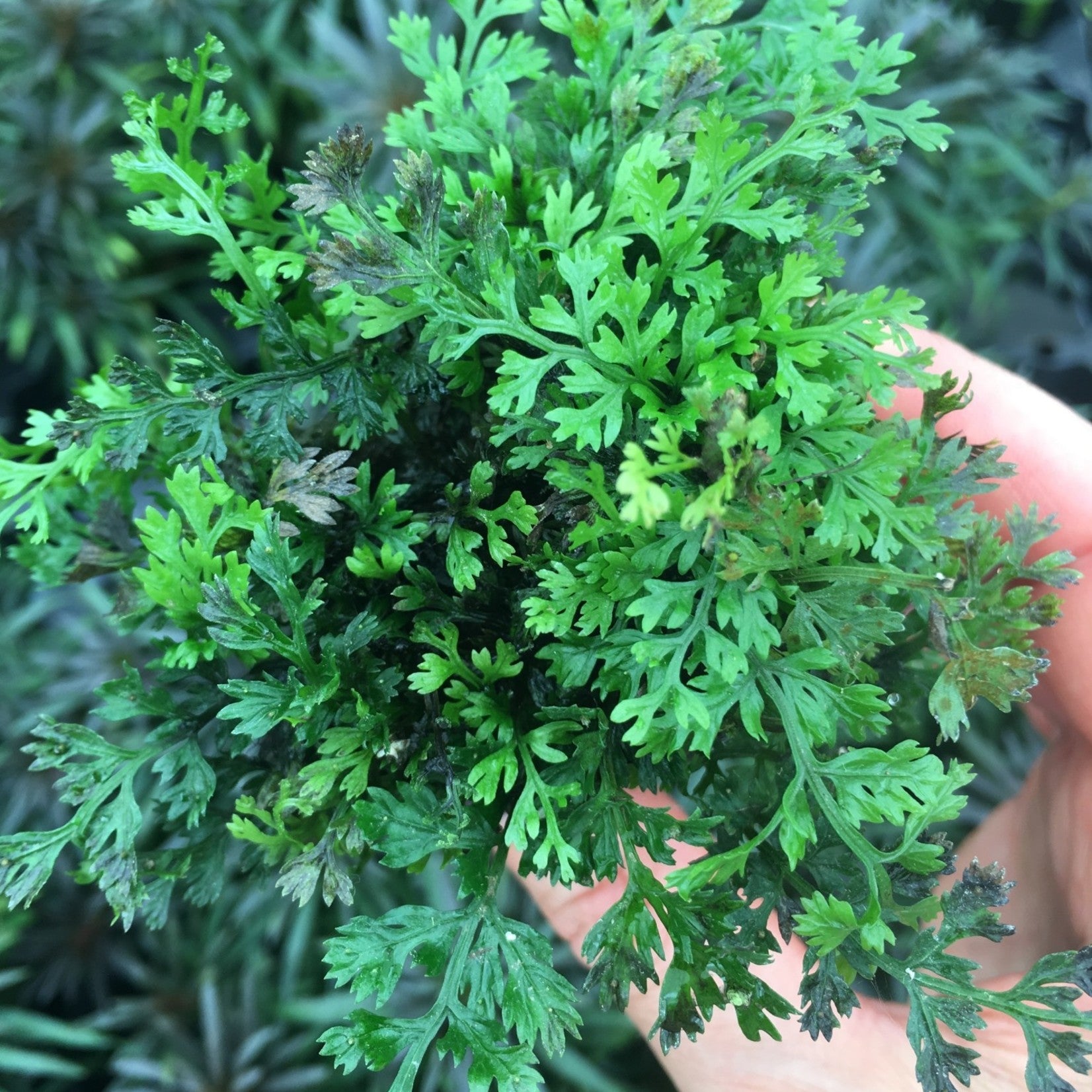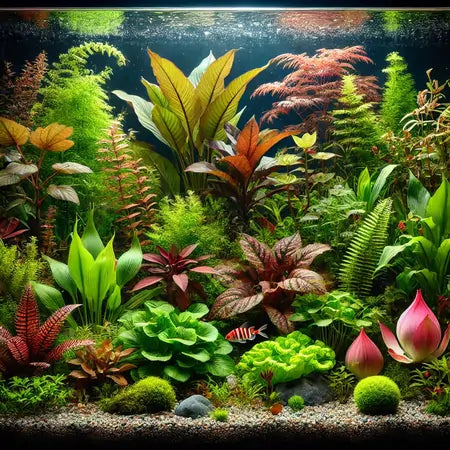Trending searches
$0

Pond plants are a diverse group of aquatic flora that thrive in freshwater environments, playing a vital role in maintaining the ecological balance of ponds. These plants, ranging from submerged species to those that float or emerge above the water surface, contribute significantly to the health and stability of aquatic ecosystems. By producing oxygen, filtering water, providing habitat and food for wildlife, and preventing erosion, pond plants are indispensable for a thriving pond environment. This introduction explores the various types of pond plants and their essential functions in sustaining a balanced and vibrant aquatic habitat.
Pond plants are aquatic plants that thrive in and around freshwater ponds. These plants can be classified into four main categories based on their growth habits and locations within the pond ecosystem: submerged plants, floating plants, emergent plants, and bog plants.
In addition to their ecological roles, pond plants enhance the aesthetic appeal of ponds, creating serene and visually pleasing landscapes. They can also play a role in natural pest control by providing habitat for beneficial insects and amphibians that prey on pests. Understanding the types and functions of pond plants is essential for anyone looking to create or maintain a healthy pond ecosystem.
Floating plants are a unique and important category of pond plants that float on the water's surface, with their roots suspended in the water below. These plants do not anchor themselves in the soil, which allows them to move freely across the water's surface.
Two common examples of floating plants include Duckweed and Salvinia.

Duckweed is one of the smallest flowering plants in the world. It consists of tiny, rounded leaves that float on the water's surface and can form dense mats. Duckweed is known for its rapid growth and can double its population in a matter of days under optimal conditions. It is often used in wastewater treatment processes due to its ability to absorb excess nutrients from the water.

Salvinia, also known as water fern, is a floating aquatic fern. It has small, oval leaves covered with water-repellent hairs that trap air, helping the plant stay afloat. Salvinia can form thick mats that block sunlight from reaching submerged plants and algae. While it can be beneficial for shading water and reducing algae growth, it can also become invasive in some regions, requiring careful management.
Floating plants are not only functional but also add a distinctive visual element to ponds. They provide shelter and breeding grounds for various aquatic organisms, including insects, amphibians, and fish.
Submerged plants, also known as submersed or aquatic plants, grow entirely underwater, with all parts of the plant—leaves, stems, and roots—typically submerged. These plants are essential for maintaining the health and balance of aquatic ecosystems.
Two common examples of submerged plants are Anacharis and Hornwort.

Ancharis also known as Elodea or Brazilian waterweed, Anacharis is a popular aquatic plant for both ponds and aquariums. It has long, bright green stems with small, narrow leaves arranged in whorls around the stem. Anacharis grows quickly and can form dense underwater forests that provide excellent habitat for fish and other aquatic organisms. It is also effective at absorbing excess nutrients from the water, which helps prevent algae blooms.

Hornwort is a free-floating submerged plant that does not root in the substrate. It has feathery, dark green leaves that grow in whorls around long, slender stems. Hornwort can grow rapidly and form dense mats under the water. It is particularly valued for its ability to release allelopathic substances that inhibit the growth of algae, making it a natural way to control algae in ponds. Additionally, it provides excellent cover and breeding grounds for fish and other aquatic organisms.
Emergent plants, also known as shoreline or marginal plants, are rooted in the pond bed or along the water's edge, with their stems and leaves extending above the water surface. These plants play a vital role in stabilizing shorelines, filtering pollutants, and providing habitat for a diverse range of aquatic and terrestrial organisms.
Two common examples of emergent plants are Bulrushes and Arrowhead.

Bulrushes, also known as cattails, are tall, slender plants with long, cylindrical flower spikes. They typically grow in dense stands along the edges of ponds, marshes, and wetlands. Bulrushes have long, narrow leaves that emerge from the base of the plant and can reach heights of several feet. They provide valuable habitat for birds, amphibians, and insects, as well as nesting material for birds such as red-winged blackbirds.

Arrowhead plants are named for their arrow-shaped leaves, which emerge from the water on long stalks. They produce white or pale pink flowers that resemble arrowheads, hence their name. Arrowheads are found in shallow waters along the margins of ponds, lakes, and streams. They provide habitat for a variety of wildlife, including frogs, turtles, and waterfowl, and their tuberous roots help stabilize shorelines and prevent erosion.
Incorporating a variety of emergent plants into pond habitats can enhance their ecological value and create diverse and dynamic aquatic environments.
Bog plants, also known as marsh plants or wetland plants, thrive in moist, muddy conditions typically found in bogs, marshes, and other wetland habitats. These plants are adapted to waterlogged soils and fluctuating water levels, making them well-suited for environments with high moisture content.
One common example of a bog plant is Mondo Grass (Ophiopogon japonicus).

Mondo Grass is a hardy perennial plant native to East Asia. It features dense clumps of narrow, grass-like leaves that grow in tufts from underground rhizomes. Mondo Grass is often used in bog gardens, wetland edges, and other moist habitats as a ground cover or border plant. It produces small, white or pale lavender flowers in summer, followed by black berries in autumn. Mondo Grass is valued for its ability to tolerate both wet and dry conditions, making it suitable for a wide range of garden settings.
Pond plants offer a range of essential benefits to aquatic ecosystems, contributing to the overall health and balance of pond environments. Some of the key benefits include:
Pond plants play a critical role in oxygenating the water through the process of photosynthesis. During daylight hours, pond plants absorb carbon dioxide and release oxygen, helping to maintain healthy oxygen levels in the water. This oxygenation is vital for the survival of fish, invertebrates, and other aquatic organisms, ensuring they have an adequate supply of oxygen for respiration.
Many pond plants act as natural filters, helping to improve water quality by removing pollutants and excess nutrients from the water. Through their roots, stems, and leaves, pond plants absorb nutrients such as nitrogen and phosphorus, which are essential for their growth. By absorbing these nutrients, pond plants help prevent nutrient buildup in the water, which can lead to algae blooms and degraded water quality.
Certain types of pond plants, such as floating and submerged plants, help to control algae growth by competing with algae for nutrients and shading the water's surface. By reducing the availability of nutrients and blocking sunlight, pond plants inhibit the growth of algae, preventing excessive algae blooms and maintaining clear water conditions. This natural form of algae control helps to preserve the aesthetic appeal of ponds and supports the health of aquatic life.
Pond plants play a crucial role in nutrient cycling within pond ecosystems. They absorb nutrients from the water, including nitrogen and phosphorus, which are often introduced into ponds through runoff from surrounding land or from fish waste. By absorbing these nutrients, pond plants help to remove pollutants from the water and prevent nutrient buildup, which can lead to water quality issues and habitat degradation.
In summary, pond plants provide a range of valuable benefits to pond ecosystems, including oxygenation, filtration, algae control, and nutrient absorption. By incorporating a variety of pond plants into aquatic habitats, pond owners can promote the health and balance of their ponds while creating beautiful and vibrant aquatic landscapes.
|
Plant |
Planting Depth |
Substrate |
Water Parameters |
Fertilization |
Maintenance |
|
Floating Plants |
|||||
|
Duckweed |
Plant at water's surface |
None required; floats freely |
pH Range: 6.0 - 7.5 Temperature Range: 15°C - 28°C (59°F - 82°F) Hardness Range: Soft to hard water |
Use pond-specific fertilizers sparingly |
Regularly remove excess to prevent overcrowding |
|
Salvinia |
Place at water's surface, allow to float |
None required; floats freely |
pH Range: 6.0 - 7.5 Temperature Range: 15°C - 28°C (59°F - 82°F) Hardness Range: Soft to hard water |
Use pond-specific fertilizers sparingly |
Regularly remove excess to prevent overcrowding |
|
Submerged Plants |
|||||
|
Anacharis |
Anchor in substrate or allow to float |
Can be planted in gravel or sand; can float |
pH Range: 6.5 - 7.5 Temperature Range: 15°C - 25°C (59°F - 77°F) Hardness Range: Soft to moderately hard water |
Use liquid or tablet fertilizers sparingly |
Trim regularly to control growth and prevent overcrowding |
|
Hornwort |
Anchor in substrate or allow to float |
Can be planted in gravel or sand; can float |
pH Range: 6.0 - 7.5 Temperature Range: 15°C - 25°C (59°F - 77°F) Hardness Range: Soft to moderately hard water |
Typically does not require additional fertilization |
Trim regularly to control growth and prevent overcrowding |
|
Emergent Plants |
|||||
|
Bulrushes |
Along shallow pond edges |
Prefer moist soil or shallow water |
pH Range: 6.0 - 8.0 Temperature Range: 5°C - 30°C (41°F - 86°F) Hardness Range: Soft to hard water |
Generally do not require fertilization |
Remove dead or decaying foliage |
|
Arrowhead |
In shallow water along pond's edge |
Prefer sandy or loamy soil; can adapt |
pH Range: 6.0 - 7.5 Temperature Range: 15°C - 28°C (59°F - 82°F) Hardness Range: Soft to moderately hard water |
Minimal fertilization needed |
Regularly remove dead or decaying leaves and flowers |
|
Bog Plants |
|||||
|
Mondo Grass |
In well-draining soil at ground level |
Prefer rich, loamy soil |
pH Range: 6.0 - 7.5 Temperature Range: 18°C - 24°C (64°F - 75°F) Hardness Range: Soft to moderately hard water |
Apply slow-release fertilizer in spring |
Trim back dead or yellowing foliage |
Issue: Excessive algae growth can overshadow pond plants, deplete oxygen levels, and degrade water quality.
Solutions:
Issue: Some pond plants may grow excessively, overcrowding the pond and competing with other plants for resources.
Solutions:
Issue: Pond plants may be susceptible to pests and diseases, which can weaken or kill the plants if left unchecked.
Solutions:
By addressing these common issues proactively and implementing appropriate solutions, you can help maintain healthy and thriving pond plants in your aquatic ecosystem. Regular monitoring and maintenance are key to preventing and managing these challenges effectively.
Consider your pond's size, depth, and sunlight exposure when selecting pond plants. Research each plant's requirements and consult with experts for guidance.
Apply slow-release aquatic plant fertilizers once or twice a year during the growing season, monitoring nutrient levels to prevent over-fertilization.
Assess environmental conditions like sunlight and water quality. Make adjustments, such as increasing sunlight exposure and improving water quality, and prune overcrowded plants.
Prevent invasive plants by avoiding their introduction. If present, manually remove them or use mechanical/chemical methods, adhering to local regulations.
Certain pond plants adaptable to low light conditions can be kept indoors in aquariums or indoor ponds. Ensure proper lighting, water circulation, and pest/disease prevention.
Pond plants are essential for maintaining the health and balance of aquatic ecosystems. They provide oxygen, filter water, and offer habitat for aquatic life. By addressing common issues like algae overgrowth and plant maintenance, pond owners can create thriving environments. Incorporating a variety of pond plants enhances biodiversity and creates a harmonious habitat. With proper care, pond plants enrich the lives of both humans and aquatic organisms.



Check out our shop for a variety of fresh, farm-grown plants! Find the perfect options to enhance your aquarium today.
!